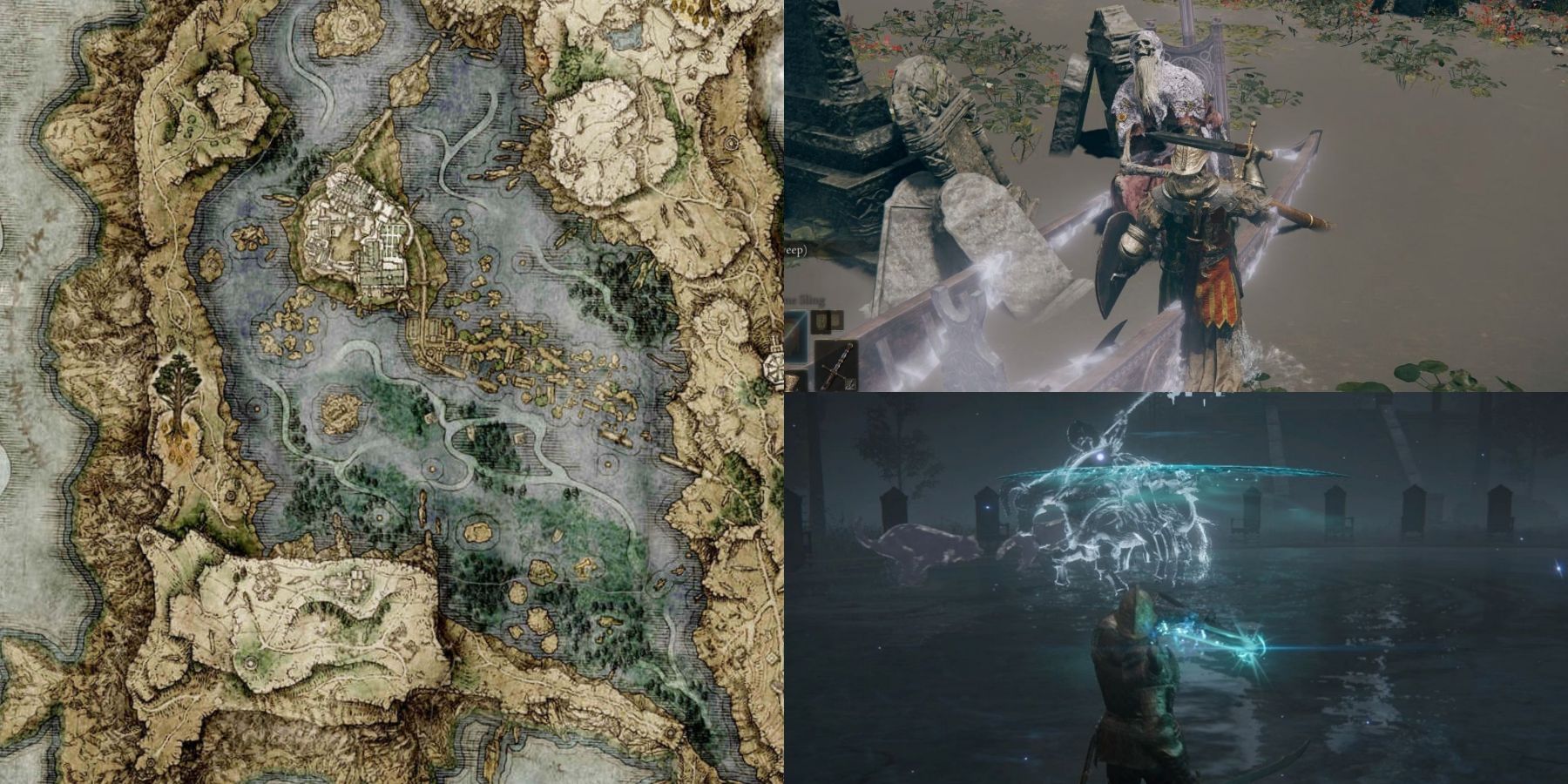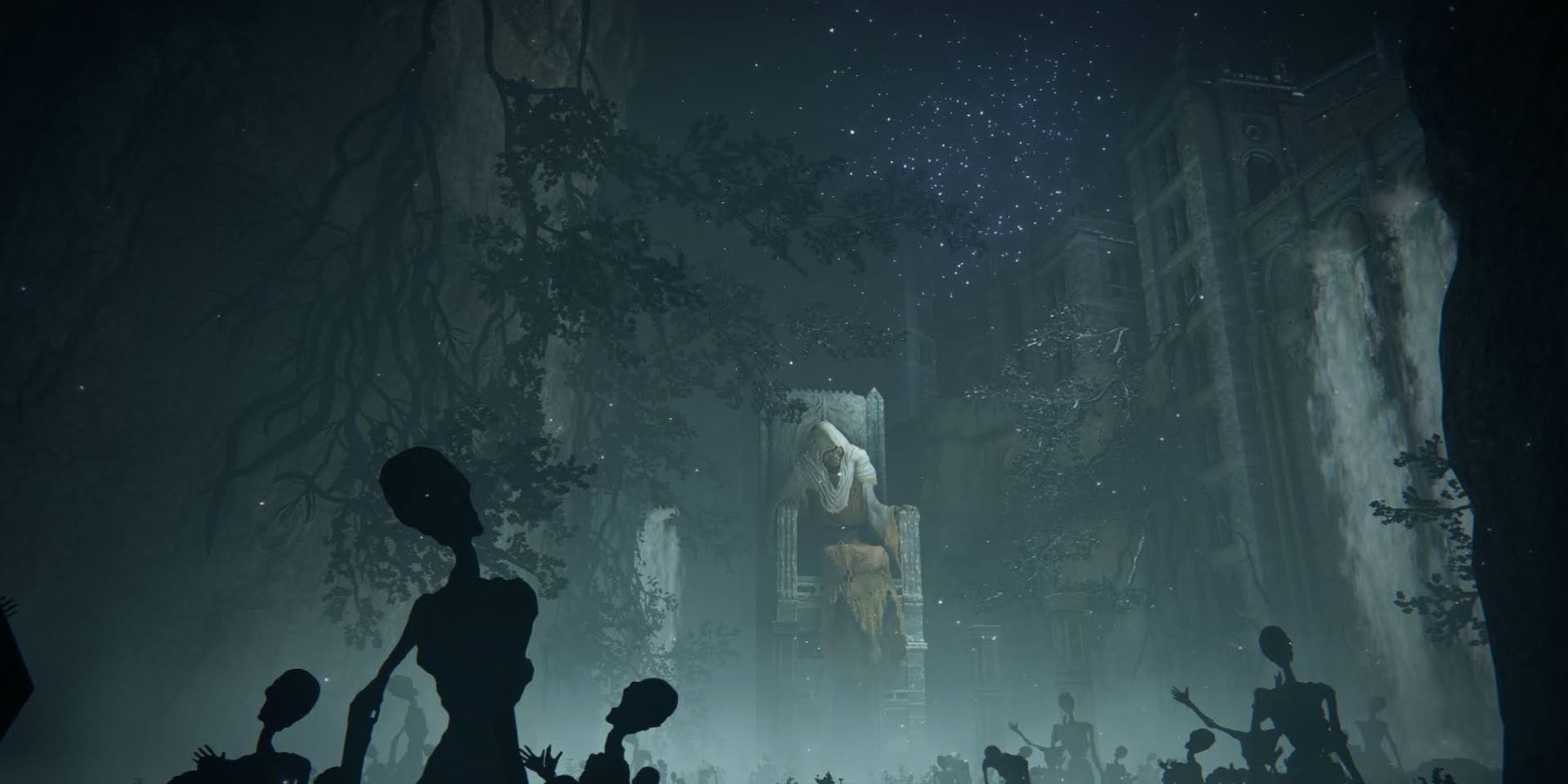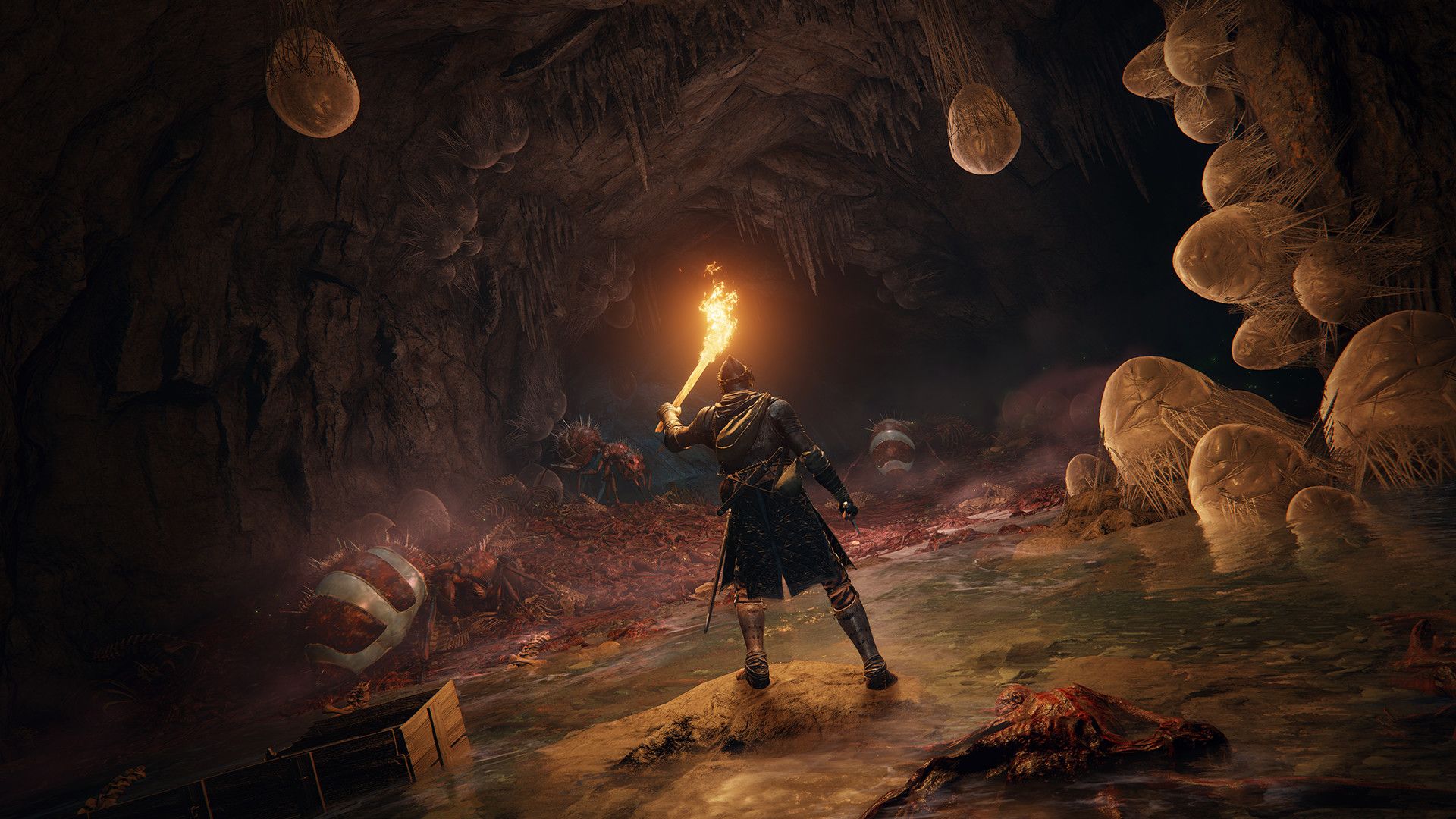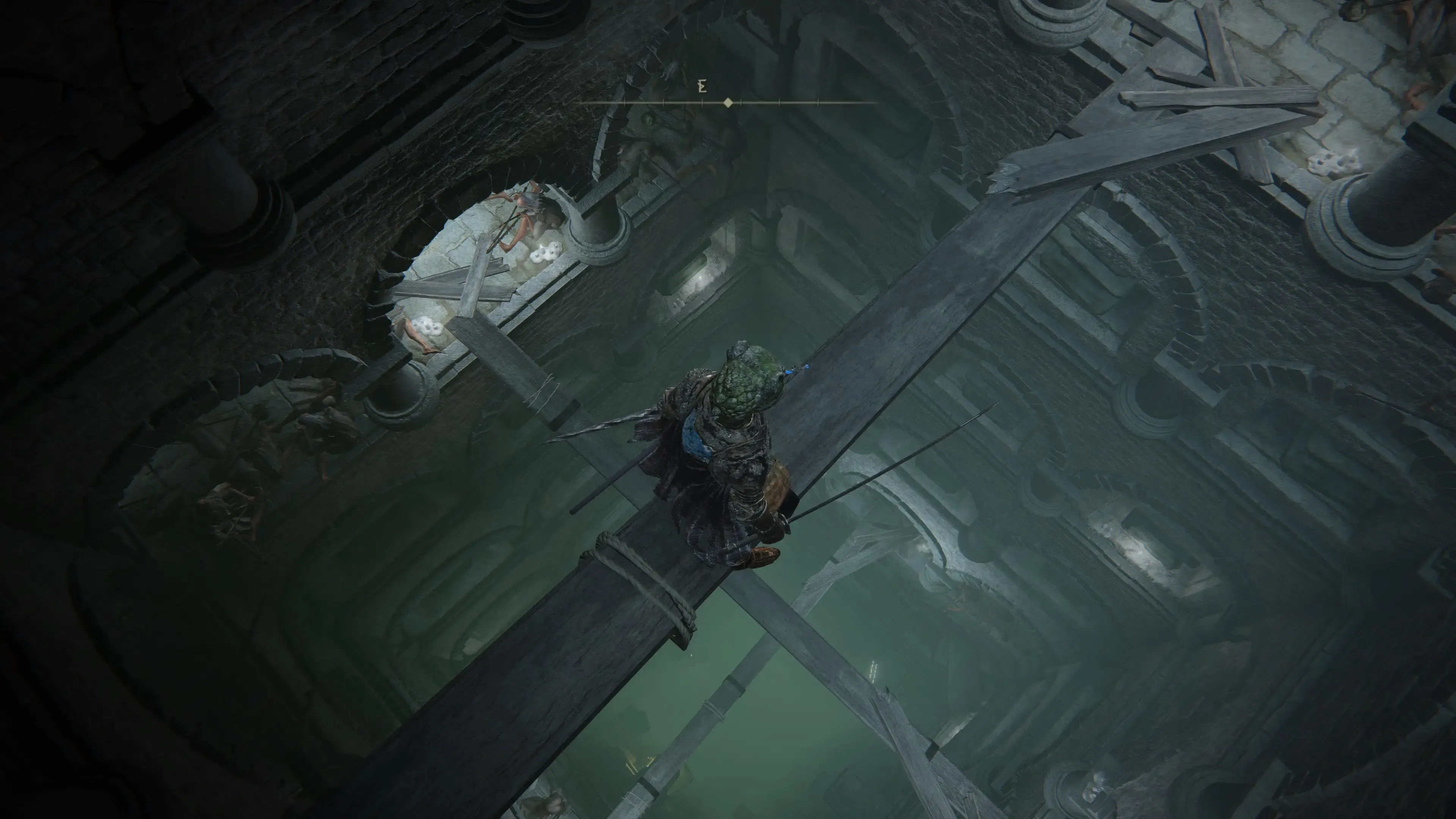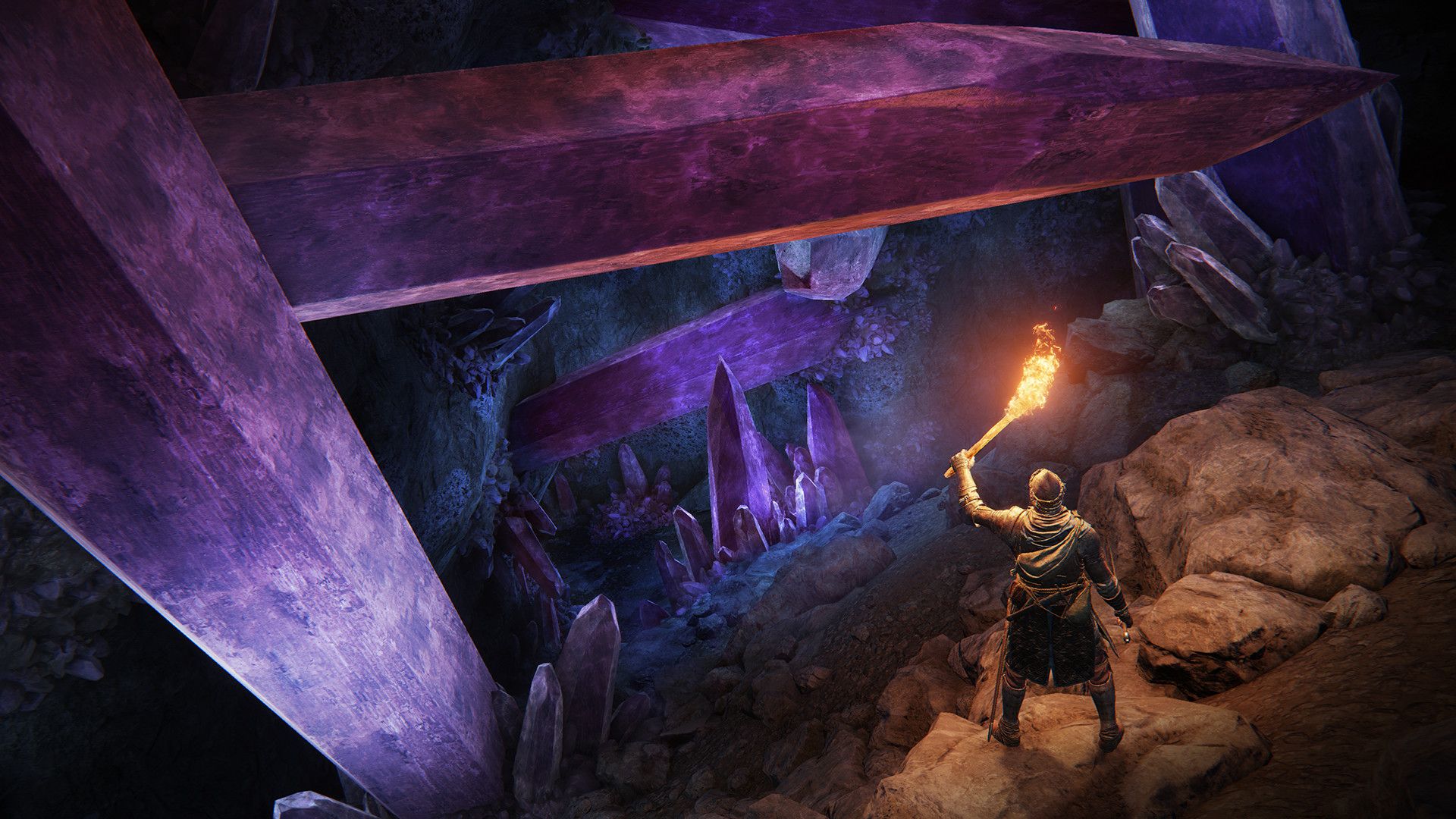Dungeons or related underground regions in video games are not uncommon, especially when it comes to open-world RPGs with sprawling landscapes that players are encouraged to explore. Dungeons could be relatively small and simple to navigate or excruciatingly intricate with different difficulty scaling attributed to them. This is also true of Elden Ring, which masterfully adapts its Soulsborne formula from games such as Dark Souls and Bloodborne to an open world where new mechanics and features needed to be introduced.
Elden Ring iterates on each of the Soulsborne games that came before it in order to craft a world full of exciting vistas and biomes that are consistently entertaining to explore. Dungeons are hardly new to FromSoftware’s previous work either, but Elden Ring puts into perspective how remarkable a scale and scope can be achieved with verticality in open-world level design. Taking a look at what makes Elden Ring’s underground areas special, dungeons are only a minor part of that equation as there are entire regions waiting idly for players to discover them.
Elden Ring’s Underground Extends its Scale Deceptively
In the beginning of players’ Elden Ring journeys, the illustrated map they have access to looks tiny, with undiscovered areas left obscured until players have visited them. Many open-world games admit their scale as players first open the map and see its entirety, whether areas are shrouded or not, leaving little to the imagination in terms of how much players will be able to traverse within it.
Rather, Elden Ring’s open-world map expands exponentially as new areas are discovered, with one of the first significant map reveals occurring when players are abducted in a chest teleporter trap and sent to the Sellia Crystal Tunnel in Caelid. Upon arrival, players are intentionally disoriented and attempting to escape while Lesser Kindred of Rot pests spam nearly unavoidable projectiles at them. But once players look at their map after they have been teleported, they come to the sudden realization that they are now far east from where they started the game in Limgrave, and the map expands dramatically to illustrate how far away they are. Then, when players are abducted and teleported to the isolated Divine Bridge at the top of the map in Leyndell, this scale is expanded upon exponentially.
Elden Ring continues to subvert the player’s expectations of how big its map actually is, but its overwhelmingly large open-world delves even further with regions that do not appear on the map’s surface. Dungeons are separate areas remote from the main map that weave through subterranean paths and have bosses waiting at their extremities.
Underground areas, however, are regions that are as open and detailed as regions on the surface, but explore a unique map layer that rests underneath. The first underground region players are likely to find is Elden Ring’s Siofra River, which has an enormous, purple night sky, and suggests to players that Elden Ring will be much larger than they ever may have anticipated.
Elden Ring’s Dungeons and Underground Areas Are Optional But Worthwhile
Siofra River, Ainsel River, and every other remote, subterranean region are incredibly worthwhile as they harbor many rewards and items. That said, they are all optional unless players wish to follow NPC quests in Elden Ring, which intelligently guide players to areas that they otherwise may not have explored or encountered.
Underground areas are monumental in leading players to Elden Ring’s alternate endings, such as traveling downward into the Subterranean Shunning-Grounds, a descending sewer network that is unseen on any map level. Players will come across an excessive number of dungeons that they could choose to leisurely traverse as they find them, or they could instead wait until they are a bit stronger or have better gear in order to return and fell a dungeon’s boss with ease.
Players are also able to simply avoid each dungeon if they wish, but they would be missing out on valuable runes with which they could level up. Some of these underground regions are found on accident or happenstance as players explore, such as taking a number of lifts descending into the depths of the environment. But some are more difficult to locate on the player’s own and are usually referenced and alluded to by NPCs. For example, there are a few unique ways players can gain access to Elden Ring’s Volcano Manor in Mt. Gelmir, but attempting to find an entrance on one’s own can be difficult.
Because several of Elden Ring’s Great Rune bosses are optional, players may not even find or fight each boss in Elden Ring before they reach Crumbling Farum Azula, which is also remotely placed on the map, suspended in the clouds, and considered a legacy dungeon while being a mandatory region in Elden Ring’s narrative.
Future Open-World Games Will Surely Look to Elden Ring for Inspiration
Because Elden Ring has infinite RPG build potential with numerous ways to experience the game in subsequent New Game+ playthroughs, its open-world has been both acclaimed and condemned for its scope. Some players believe that the overwhelming scale of its open-world, dungeons and underground regions included, is phenomenal on a first playthrough while the player is unbeknownst to what each area holds. But once each area has been explored, that novelty seems to wear away for players who determine it a slog to have to run through many of these areas.
If players are maneuvering a New Game+ playthrough after already having explored every area to its extent in a previous playthrough, there will be hardly any incentive to return to an explored region unless they are hoping to follow an NPC quest. However, there are massive optional regions such as Miquella’s Haligtree in Elden Ring that provide a challenge to players who wish for one.
Miquella’s Haligtree is difficult to reach and the boss that awaits players in its depths is none other than Malenia, Blade of Miquella, whom fans have collectively expressed their shared torment and adoration toward. Regardless of how fans feel about its replayability, Elden Ring’s open-world features will undoubtedly inspire future open-world games, and a huge precedent has now been established for scale, whether it incorporates verticality and underground areas or not.
Dungeons and other underground areas may now be approached much differently as developers attempt to capture what makes Elden Ring’s own regions so satisfying to discover and explore. Elden Ring makes the most out of its landscape with multiple hidden areas, and that could be setting a gold standard for other open-world games to achieve in the future as well.
Elden Ring is available now on PC, PS4, PS5, Xbox One, and Xbox Series X/S.


